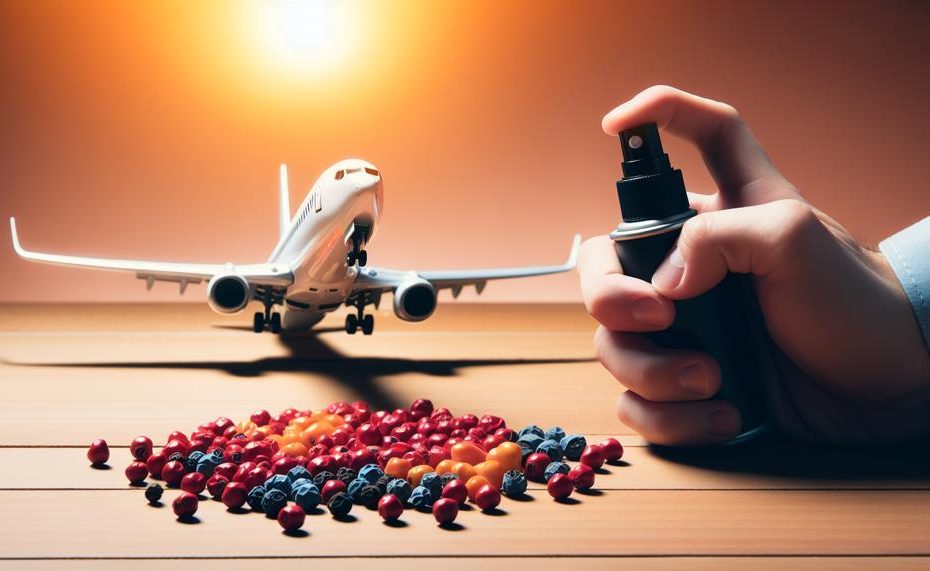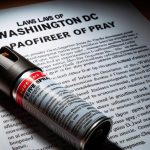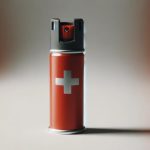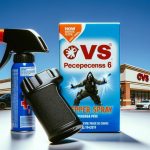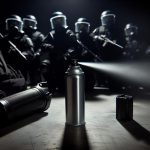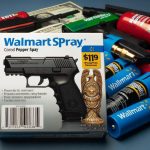As we buckle up and prepare for takeoff, the safety and security of air travel is at the forefront of our minds. With recent events raising concerns about in-flight safety, one question has emerged: can pepper spray be brought on airplanes?
This controversial topic has sparked debates among travelers and aviation professionals alike.
In this blog post, we will dive into the world of pepper spray on airplanes, exploring its legality, practicality, and potential risks. Get ready to discover:
- The current regulations surrounding pepper spray on airplanes
- The benefits and drawbacks of using it as a defensive tool
- Real-life incidents where pepper spray was used on flights
- Alternative safety measures that can be implemented instead
Join us as we unravel the truth behind this hotly debated issue. Whether you’re a frequent flyer or simply curious about aviation safety, this post is sure to provide valuable insights and ignite thought-provoking discussions.
So, fasten your seatbelts and get ready for a deep dive into the world of pepper spray on airplanes.
Contents
Can you bring pepper spray on a plane?
Pepper spray, a self-defense tool, is permitted on planes; however, it must be stored in checked baggage. The container size is limited to 4 ounces and must contain no more than 2% tear gas.
This restriction ensures the safety of individuals on the plane in case of accidental deployment. It also allows for proper storage and safety measures.
Key Considerations When Selecting Pepper Spray for Travel:
| Size | The maximum allowed size for pepper spray on planes is 4 fl. oz. |
| Safety Mechanism | Pepper spray must have a safety mechanism to prevent accidental deployment. |
| Tear Gas Percentage | The tear gas percentage must not exceed 2% to ensure passenger safety. |
It is essential to note that some airlines may have differing policies on pepper spray, so it is advisable to have the TSA rules on hand when traveling. Additionally, bear spray and keychain pepper spray are not permitted on planes. If carrying multiple containers of pepper spray, they will be confiscated.
When traveling internationally, it is crucial to research and follow the country’s laws regarding pepper spray. Some countries may have strict regulations or ban its use entirely. In such cases, it is best to leave your pepper spray at home and consider alternative methods of self-defense.
To sum up, while pepper spray is allowed on planes for self-defense purposes, it must be stored in checked baggage and comply with size, safety, and tear gas percentage restrictions.
TSA compliant pepper spray
TSA-approved pepper spray, also known as TSA compliant pepper spray, is a self-defense spray that can be carried on planes as long as it meets specific guidelines set by the Transportation Security Administration (TSA).
These guidelines include restrictions on size, safety features, and tear gas content. Regular pepper spray may not meet these requirements and is prohibited on planes.
Size Restrictions:
To ensure the safety of all passengers and crew members, TSA compliant pepper spray is limited to one 4 fl. oz. container in checked baggage.
This size restriction prevents an excessive amount of pepper spray from being present on the plane.
In contrast, regular pepper spray may come in larger containers, making it non-compliant with TSA regulations.
Safety Features:
In addition to size limitations, TSA compliant pepper spray must also have a safety mechanism in place to prevent accidental discharge during transportation.
This feature ensures the safety of everyone onboard the plane. Regular pepper spray may not have this safety measure, making it non-compliant with TSA regulations.
Limitations on Tear Gas Content:
The tear gas content in TSA compliant pepper spray cannot exceed 2%. This restriction is crucial to prevent excessive irritation and discomfort to passengers and crew members if the pepper spray were to be discharged on a plane.
On the other hand, regular pepper spray may contain higher percentages of tear gas, making it non-compliant with TSA regulations.
Conflicting Airline Policies:
It’s important to note that while TSA allows for compliant pepper spray in checked baggage, individual airlines may have their own policies regarding the transportation of such items. To ensure compliance with both TSA and airline policies, it is recommended to have the TSA guidelines on hand when traveling.
In conclusion, TSA compliant pepper spray differs from regular pepper spray in terms of its allowance on planes due to its adherence to size restrictions, safety features, and limitations on tear gas content. As travelers, it is crucial to research and comply with all regulations when carrying any form of self-defense item, including pepper spray.
TSA pepper spray rules
Pepper spray that is approved by the TSA can be brought onto airplanes, as long as it adheres to specific rules and regulations. These regulations include limitations on container size, safety mechanisms, and tear gas content.
It is important to keep in mind that some airlines may have different policies, so it is best to have the TSA webpage accessible for reference.
Limitations on Container Size:
The container for pepper spray must not exceed 4 fl. oz. (118 ml). This limitation guarantees that the amount of pepper spray carried by an individual is a safe and reasonable amount.
Safety Mechanisms:
The pepper spray container must have a safety mechanism in place to prevent accidental discharge.
This ensures the safety of both the individual carrying the pepper spray and those around them.
Restrictions on Tear Gas Content:
Pepper spray cannot contain more than 2% tear gas (CS or CN) by mass.
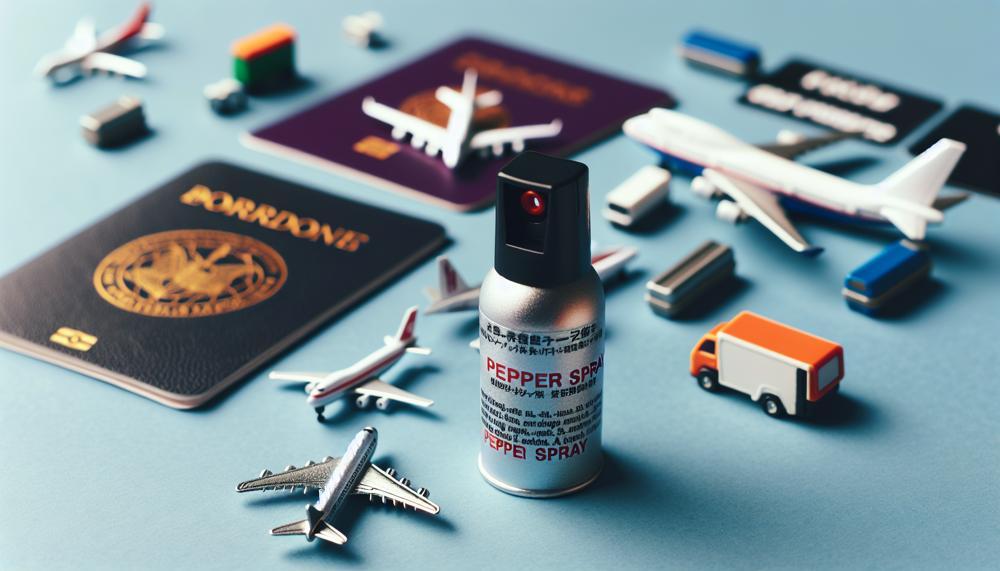
This ensures that the pepper spray is not too potent and does not cause harm to individuals.
Other Important Considerations:
- Pepper spray is not permitted as a carry-on item, although some airlines may allow it in checked baggage.
- Bear spray is not allowed on airplanes, even in checked baggage.
- When traveling internationally, it is crucial to check the legality of pepper spray in the destination country and declare it if necessary.
- Pepper spray cannot be attached to keychains when going through security.
- It is not allowed to bring a lighter with pepper spray onto a plane as a carry-on item.
- Pepper spray has an expiration date and should be checked before traveling.
In summary, TSA-approved pepper spray can be brought onto airplanes, but with limitations and varying policies among airlines. It is critical to follow these rules and regulations set by the TSA to ensure the safe and appropriate use of pepper spray for self-defense while traveling.
Why is pepper spray restricted on planes?
There are multiple factors that contribute to why pepper spray is not allowed on airplanes. These reasons involve safety and security concerns, as well as regulations set by the Transportation Security Administration (TSA).
Pepper spray is classified as a weapon due to its potential to cause harm and incapacitate individuals. If someone were to use pepper spray on a plane, it could cause injury or even force an emergency landing, putting passengers and crew at risk. This is why it is considered a restricted item on flights.
Additionally, the chemicals in pepper spray can be hazardous if not handled properly. This poses a danger to both individuals and the aircraft itself. Allowing pepper spray on planes increases the risk of accidents or incidents, making it a hazardous material that is prohibited from being brought on board.
The TSA has strict regulations in place for what items can be brought on board an airplane for safety reasons. Pepper spray does not meet these regulations and is therefore not allowed in your pocket or carry-on baggage. This is to ensure the safety of all passengers and comply with TSA guidelines.
Moreover, in the confined space of an airplane, the misuse of pepper spray by a passenger can have severe consequences for everyone onboard. Restricting pepper spray on planes helps prevent potential incidents from occurring and ensures a safe flight for all.
Mace versus pepper spray
Mace and pepper spray are two distinct self-defense options created from varying chemical compositions.
While pepper spray has a greater intensity and range, both are prohibited from being brought onto airplanes due to safety regulations.
Is pepper spray legal in every state?
Yes, but the use and purchase laws vary. While some states have strict regulations, others have none. Below is a breakdown of pepper spray laws in different states:
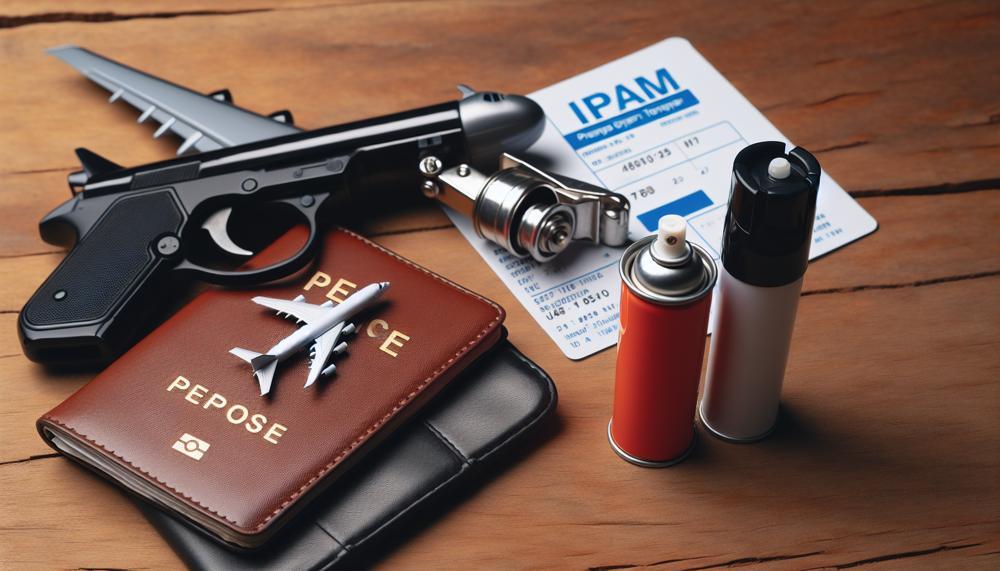
| State | Laws | Restrictions |
| Alabama | Legal for individuals over 18 to purchase and carry for self-defense purposes. | No limitations on size or strength. |
| Alaska | Individuals over 18 can legally purchase, carry, and use pepper spray for self-defense. | No restrictions on size or strength. |
| Arizona | Legal for individuals over 18 to purchase, carry, and use for self-defense. | No limitations on size or strength. |
| Arkansas | Individuals over 18 can legally purchase, carry, and use pepper spray for self-defense. | No restrictions on size or strength. |
| California | Individuals over 18 can legally purchase and carry pepper spray for self-defense. However, it must only be used in defense of oneself or others. | Limited to 2.5 ounces per canister of pepper spray. |
| Colorado | Individuals over 18 can legally purchase and carry pepper spray for self-defense from licensed dealers. | No limitations on size or strength. |
| Connecticut | Individuals over 18 can legally purchase and carry pepper spray for self-defense from licensed dealers. | A permit is required to purchase pepper spray. Limited to 0.5 ounces per canister of pepper spray. |
| Delaware | Individuals over 18 can legally purchase and carry pepper spray for self-defense from licensed dealers. | No limitations on size or strength. |
| District of Columbia | Individuals over 18 can legally purchase, carry, and use pepper spray for self-defense. | Limited to 2 ounces per canister of pepper spray. |
| Florida | Individuals over 18 can legally purchase and carry pepper spray for self-defense from licensed dealers. | No limitations on size or strength. |
| Georgia | Individuals over 18 can legally purchase, carry, and use pepper spray for self-defense. |
Airline policies on pepper spray
The policies of different airlines regarding pepper spray may vary, but they typically adhere to the regulations set by the Transportation Security Administration (TSA).
Pepper spray is allowed on a plane, but it must be placed in your checked baggage and cannot exceed certain limitations, based on its type and strength.
| Carry-on | Checked Baggage | Safety Mechanism |
| Not Permitted | Permitted | Required |
| N/A | Maximum of 4 ounces or 2% tear gas | Yes |
According to the TSA, pepper spray is classified as a self-defense spray and is allowed in checked baggage. However, there are limitations in place for the size and strength of the spray. These restrictions are put in place to ensure the safety of all passengers and airline staff.
Individuals are permitted to carry a maximum of 4 ounces or 118 milliliters of pepper spray in their checked baggage. Additionally, the spray cannot contain more than 2% tear gas. If the pepper spray exceeds these limitations, it will be confiscated from the bag.
It is important to note that pepper spray is strictly prohibited in carry-on luggage. This is due to safety concerns and the potential for misuse during a flight. Therefore, if you are traveling with pepper spray, it must be packed in your checked baggage.
Aside from size and strength limitations, there are also requirements for the safety mechanism of the pepper spray. The TSA mandates that all pepper sprays have a safety mechanism to prevent accidental discharge. This ensures the safety of everyone on board the aircraft.
While most airlines follow the TSA regulations, it is always wise to check with your specific airline before traveling. Some airlines may have stricter policies in place, so it is best to confirm beforehand to avoid any issues at the airport.
Bear spray
Bear spray is classified as a hazardous material and must follow the TSA’s guidelines for hazardous materials. According to the TSA, “bear repellent sprays containing more than 2% capsaicin, the active ingredient, are not allowed in carry-on or checked baggage.”
If you plan to travel with bear spray, it must be checked in with your luggage and adhere to specific TSA guidelines. These include:
- The bear spray must be under 4 ounces (118ml)
- The total amount of bear spray in checked baggage cannot exceed 70 ounces (2070ml)
- The canister must have a safety feature to prevent accidental discharge
- The entire canister must be securely wrapped or packed in a sealed container or plastic bag
Why Bear Spray is Not Allowed on Planes
Bear spray is prohibited on planes due to its potential to cause harm and disrupt the flight. While it may be effective against bears, it can also harm others if used on a plane. Additionally, the pressurized canisters used for bear spray can potentially explode at high altitudes, posing further danger.
To ensure the safety of all passengers, it is crucial to follow TSA regulations and avoid attempting to bring bear spray onto a plane.
Alternative Self Defense Options on a Plane
While bear spray may not be allowed for self defense on a plane, there are other options that are permitted and can provide protection in case of an emergency. Some alternative self defense options on a plane include:
- Personal alarm: These compact devices emit a loud sound when activated, which can startle an attacker and draw attention to the situation.
- Tactical pen: This multi-functional pen can be used for writing but also has a sharp point for self defense in close quarters.
- Self defense keychain: These small devices fit on a keychain and may have features like pepper spray or a small knife for protection.
It is essential to note that these alternative self defense options may also have specific regulations and guidelines for air travel.
Rules for international travel
When embarking on an international trip, it is crucial to familiarize oneself with the guidelines and policies regarding the use of pepper spray. While it is permitted in checked baggage, there are specific limitations and restrictions that must be adhered to in order to guarantee a safe and trouble-free journey.
| Is it allowed on flights? | Yes | (in checked baggage) |
| What is the container size limit? | 1 fl. oz. (8ml) | |
| Is a safety mechanism required? | Yes | (to prevent accidental discharge) |
| What is the tear gas content limit? | Less than 2% | (by mass of CS or CN) |
| Are there restrictions in other countries? | Many countries prohibit pepper spray entirely | (be sure to research before bringing on international flight) |
It is essential to note that while pepper spray is allowed on international flights, it must be packed in checked baggage and not carried onto the aircraft. This is due to the fact that pepper spray is classified as a hazardous material and can pose a safety threat if accidentally discharged during the flight.
Additionally, the maximum container size for pepper spray on international flights is 1 fl. oz. (8ml). This ensures that the amount of pepper spray brought on board is minimal and does not pose any danger to other passengers or the aircraft.
Moreover, a safety mechanism must be present on the pepper spray container to prevent unintentional discharge. This helps to ensure the safety of all passengers and crew members on the flight.
It is also important to note that self-defense sprays containing more than 2% by mass of tear gas (CS or CN) are prohibited in checked baggage. This is because the high concentration of tear gas can pose a serious threat to the safety and welfare of passengers and crew members.
Lastly, it is crucial to research and be aware of the regulations and restrictions for pepper spray in the country you are traveling to. Many countries have banned pepper spray entirely, so it is imperative to check beforehand to avoid any legal issues or complications during your trip.
Conclusion
In conclusion, the use of pepper spray on airplanes remains a contentious issue, with a range of regulations and restrictions in place.
While it is permitted in checked baggage, there are strict limitations on its size, strength, and safety features. To ensure a smooth and secure flight experience, it is crucial to thoroughly research and adhere to all TSA guidelines when traveling with pepper spray.
Additionally, bear spray is classified as a hazardous material and must also comply with specific TSA regulations if brought on board.
With safety being the top priority for air travel, it is imperative to understand and follow these rules for the well-being of all passengers and crew members.
